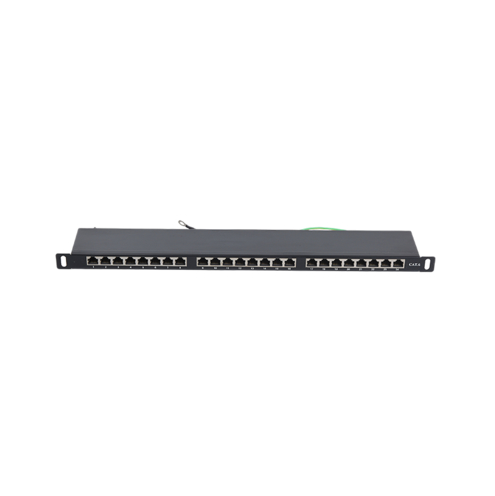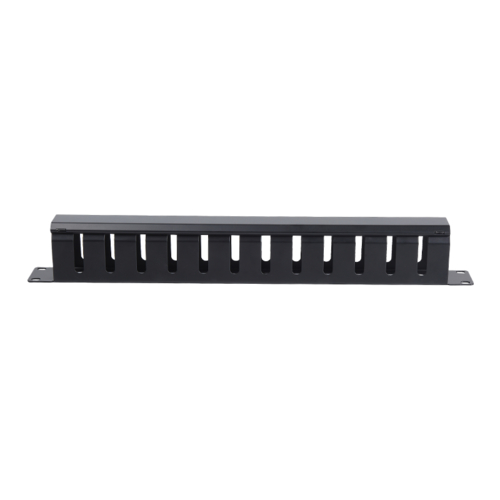In modern network infrastructure, the patch panel is a core component of data centers, enterprise network server rooms, and local area network (LAN) cabling. It not only enables efficient centralized management of network cables but is also crucial for ensuring stable system operation and future scalability.
Content
What is a Patch Panel? Why is it so important?
A patch panel is essentially a passive network hardware component, typically installed in a standard server rack. It provides a series of ports for terminating permanent links in horizontal cabling systems (such as twisted-pair cables).
Its primary function is to isolate the connections of external devices (such as switches and routers) from the building's fixed cabling system. By using patch cords to connect the patch panel and switches, any configuration changes or troubleshooting can be performed at the front end of the patch panel without interfering with the permanent cabling inside the walls or ceiling.
How to Correctly Use and Install a Patch Panel?
Properly using a patch panel involves three core steps: installation, termination, and patch cord connections.
1. Patch Panel Installation and Planning
- Choose the appropriate patch panel: Cat5e, Cat6, Cat6A, and even fiber optic patch panels are available. You should choose based on your network speed requirements (e.g., gigabit or 10 gigabit) and the type of network cable used.
- Physical Installation: Install the patch panel in a standard 19-inch rack or wall mount. Ideally, it should be located above or below the switch or network equipment for easy patch cord connections.
- Planning: Before termination, plan which area or device each port will connect to and clearly label it (labeling is key to efficient patch panel use).
2. Cable Termination (Punching)
This is the most crucial step in using a patch panel.
- Prepare Cables: Run the permanent network cable from the wall outlet or work area to the rack and strip the outer sheath.
- Termination Tool: Use a professional punch-down tool to crimp the eight wires of the network cable into the IDC (Insulation Displacement Connector) module behind the patch panel according to the T568A or T568B standard (the entire network must adhere to the same standard).
- Check: Use a network tester to test each terminated permanent link to ensure there are no short circuits, open circuits, or incorrect wiring sequences.
3. Patch Cord Connection and Management
Once the cables are successfully terminated on the patch panel, the next step is to connect the network devices.
- Using Patch Cords: Use standard-length patch cords to connect the ports on the patch panel to the corresponding ports on the switches.
- Cable Management: Use a cable management system to ensure patch cords are neatly organized. Avoid crossing or piling up patch cords, as this helps with heat dissipation and future troubleshooting.
- Maintenance and Troubleshooting: When device connections need to be changed, simply replace the patch cord between the patch panel and the switch, greatly simplifying maintenance and improving efficiency. If a network failure occurs, first check the indicator lights and patch cord connections on the patch panel to narrow down the troubleshooting scope.

Advantages of Using Patch Panels
Efficiently deploying and using patch panels will bring the following significant advantages to your network system:
- Easy Management: Enables centralized management of network cabling, with all fixed cabling concentrated in one place.
- Enhanced Stability: Protects permanent cabling within the walls from damage caused by frequent plugging and unplugging, extending the lifespan of the entire cabling system.
- Rapid Deployment and Maintenance: Quickly identifies and isolates faulty ports, simplifying the addition, movement, and changes of network devices (MACs, Moves, Adds, Changes).
- Aesthetics and Neatness: Creates a professional and tidy cabling environment in the data center by using it in conjunction with cabinets and cable managers.
Patch panels are the foundation for building a reliable and scalable network environment. Mastering the skills of "how to use patch panels" not only ensures that your network installation meets industry standards but also significantly improves the operational efficiency and maintainability of the network in the later stages. Whether it's an enterprise data center or a small office network, high-quality patch panels and standardized cabling practices are a solid guarantee for stable network operation.



 Español
Español عربى
عربى













